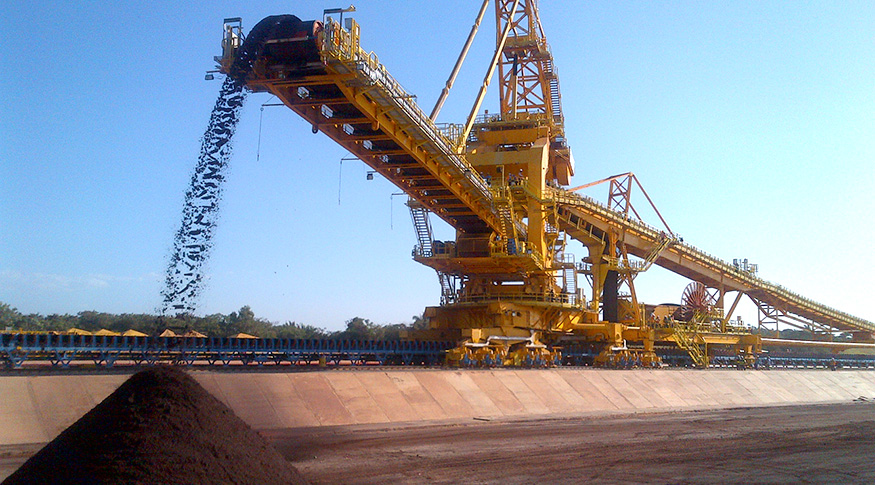Domestic industry
Industrial production drops 1.6% in January after two months of growth
March 06, 2024 09h00 AM | Last Updated: March 07, 2024 12h54 PM
 Mining and quarrying industries and food products influence industry decline in January 2024 - Photo: Agência Vale
Mining and quarrying industries and food products influence industry decline in January 2024 - Photo: Agência ValeIndustrial production fell 1.6% from December 2023 to January 2024, after accumulating expansion of 2.9% in the period from August to December 2023. With these results, the sector is still 0.8% below the pre-pandemic level (February 2020) and 17.5% below the record level reached in May 2011. In comparison with January 2023, there was an increase of 3.6%. In 12 months, the industry accumulated an increase of 0.4%.
The result marked the most intense drop since April 2021 (-1.9%) and interrupted two consecutive months of positive rates: December 2023 (1.6%) and November 2023 (0.6%). “Even with the industrial sector recording the sharpest negative change since April 2021, when it registered a loss of 1.9%, we can see a widespread profile of positive rates, reaching 18 of the 25 industrial sectors surveyed", explains the survey manager, André Macedo.
From December to January, two of the four major economic categories and 6 of the 25 sectors surveyed showed a decline in production. The negative highlights were mining and quarrying industries (-6.3%) and food products (-5.0%).
According to Mr. Macedo, “the first activity was pressured by the lower extraction of oil and iron ore, interrupting two consecutive months of growth in production, a period in which it accumulated expansion of 6.7%. The second had as its main negative influence the reduction in sugar manufacturing, eliminating part of the 11.3% expansion accumulated in the period between July and December”, he analyzes.
Other relevant negative contributions to the industry total came from wearing apparel and accessories (-6.4%) and textiles (-4.2%).
On the other hand, among the eighteen activities that showed expansion in production, chemicals (7.9%), computer equipment, electronic and optical products (13.7%), motor vehicles, trailers and bodies (4.0%) and machinery and equipment (6.4%) had the main impacts in January 2024.
Industry advances 3.6% compared to January 2023
Compared to the same period in 2022, the industrial sector grew 3.6% in January 2024, with positive results in four of the four major economic categories, 17 of the 25 sectors.
Mr. Macedo explains that this result “marked the sixth consecutive month of growth in production and the highest positive rate since June 2021, when it had grown 12.1%. It is worth highlighting that in this month's index, for the first time since August 2022, there is a widespread profile of positive rates, reaching 17 of the 25 industrial sectors surveyed."
Among the activities, the main positive influences on the total industry were recorded by coke, petroleum products and biofuels (9.1%), mining and quarrying industries (6.5%) and food products (3.8%).
The activity of coke, petroleum products and biofuels was driven mainly by the greater production of diesel fuel, motor gasoline, aviation kerosene and fuel oils. The mining and quarrying industries, in turn, was driven by iron ores, crude petroleum oils and copper ores and their concentrates (raw or processed). The food sector was driven by the influence of fresh or coolled beef, pies, cakes and bran from soybean oil extraction, concentrated orange juices, food complements and vitamin and mineral supplements, refined and raw soybean oil, refined sugar of sugar cane and frozen meat and poultry offal.
More about the survey
Since the 1970s, PIM Brazil has been producing short-term indicators related to the behavior of the real product of the mining and quarrying and manufacturing industries. As of March 2023, the publication of the new series of monthly industrial production indices began, after a reformulation to: update the sample of activities, products and informants; develop a new index weighting structure based on the most recent industrial statistics; update the survey reference year; and add new Federation units in the dissemination of regional results. These methodological changes are necessary and seek to incorporate the economic changes in society. The survey results can also be consulted in the Sidra database.
The next release, for February 2024, will be on April 3rd.




















